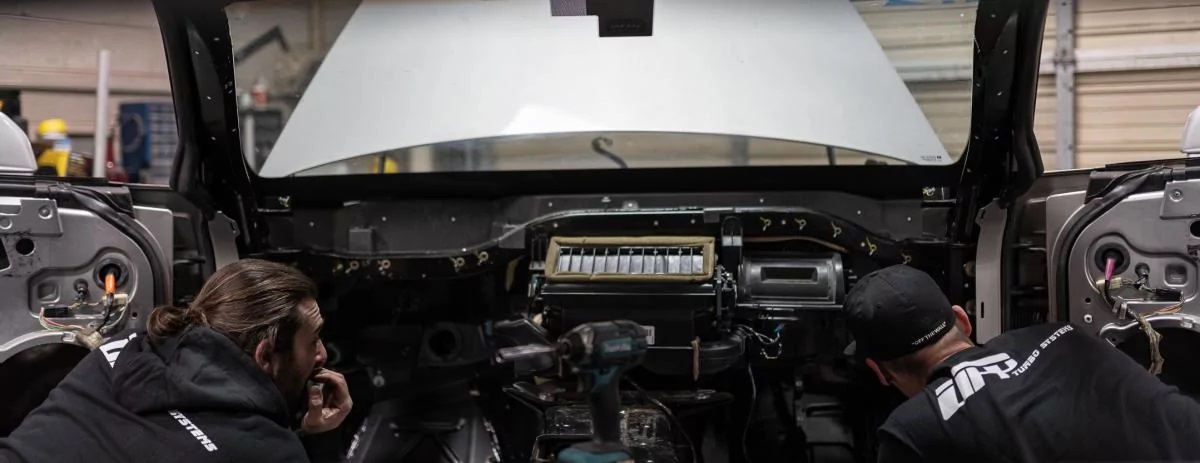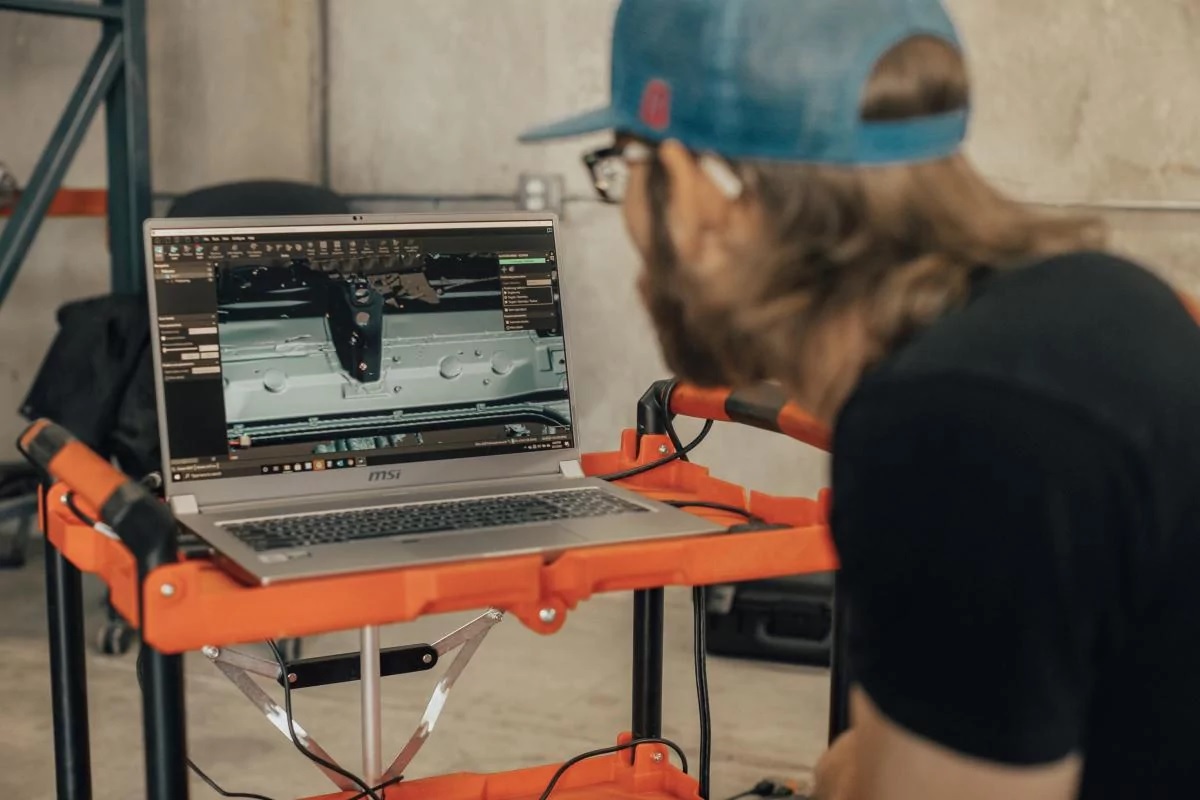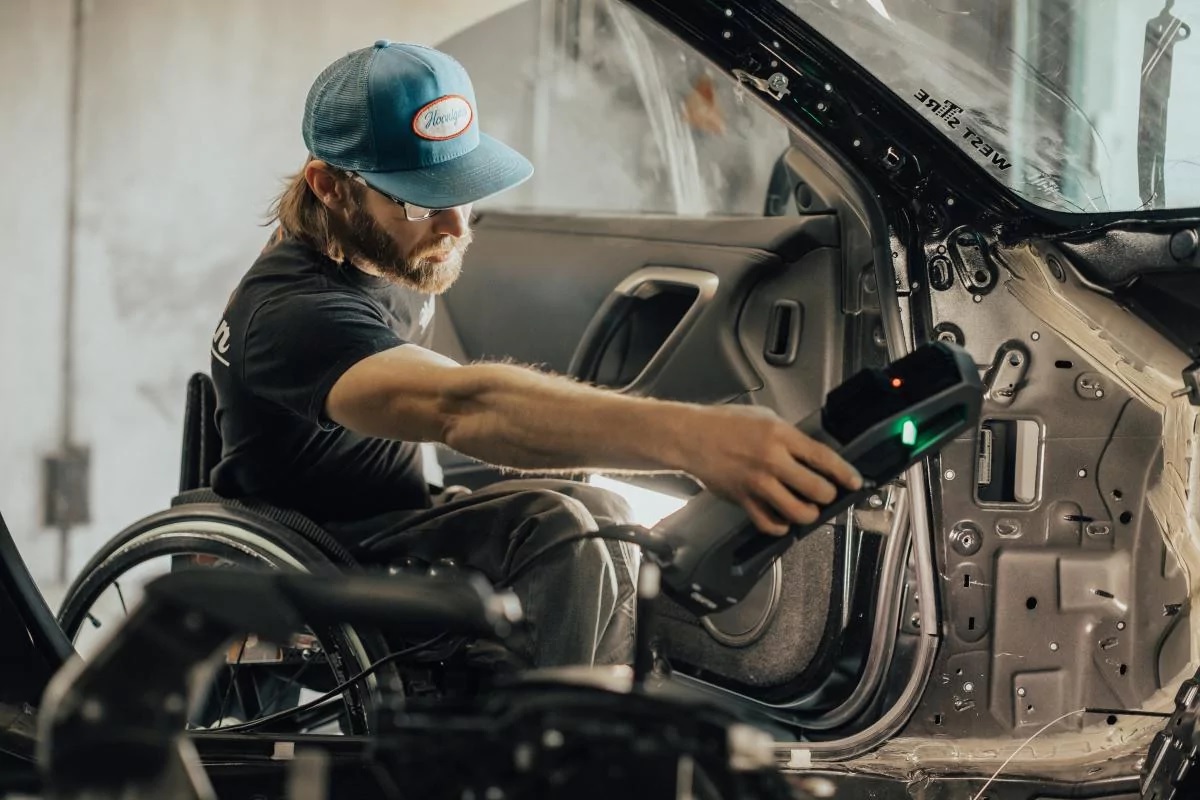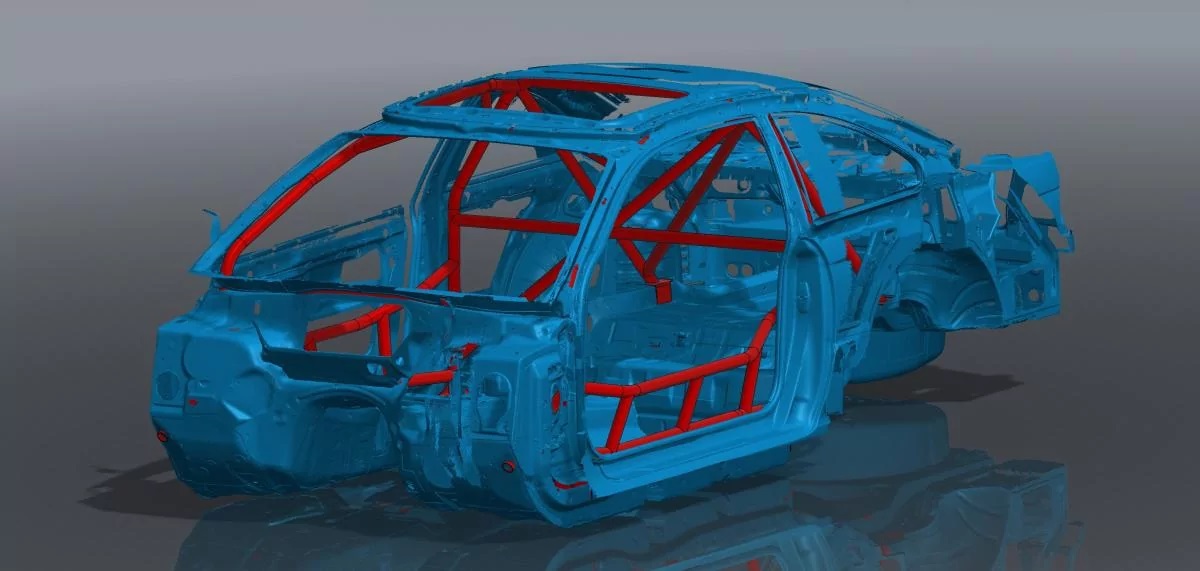- Article
- Related
Innovative products are no longer sufficient to meet customers’ expectations and needs. Sped-up time-to-market and accelerated time-to-delivery are also expected in an increasingly competitive market. Thus, the pressure is on the product development team to design superior products that fit on the first try.
Challenges: How can designers make sure that their first prototype fits perfectly on the first try?
Traditional measuring methods, such as a measuring tape, a vernier caliper, or pieces of cardboard, are not suitable for measuring organic, non-planar, and complex shapes. Developing a product, such as a roll cage, that will perfectly fit the shape of a car chassis requires having the exact vehicle measurement data. If measurements are taken badly, then the quality of the design will be affected. Countless iterations will be necessary to correct the initial design. This trial-and-error game to achieve the perfect fit lengthens the product development process, therefore extending the product launch on the market or delivery to the customer.
How can designers extract the measurements that are required to create their design, taking into account all of the entities appearing in 3D space?
Between attachment points, there are usually existing features to work around, multiple details to study, and diverse reliefs to consider. Designers must have the precise dimensions of each of these entities in order to base their design on an exact representation of the environment where the roll cage, for instance, will be positioned.
How can designers measure the 3D environment quickly in order to avoid monopolizing the customer's vehicle for a long period of time?
Companies that design custom-built products must base their designs on their customers’ vehicles. Because they require the vehicle to take the measurements, they are under pressure to acquire the product data in a short period of time. They do not have the time for a complicated measurement setup. They may even have to go to the dealership for a quick measurement session or travel to an overseas customer to digitize a specific vehicle. In such cases, their measuring instrument needs to be handheld, portable, fast, and easy-to-use.
How can designers be sure that the roll cage will fit the customer's car and, simultaneously, offer a competitive advantage over similar products available on the market?
New product designs come with their share of unknowns. Will the custom-made product ultimately fit in its environment? Will the customers be satisfied and feel that they are getting their money's worth? Companies that base their product offerings on tailor-made products must be able to trust that the design process is flawless and leads to quality designs that are superior to the competition.
Solutions: High-Resolution, Simple, Portable, and Fast 3D Scanning Technologies
The high level of detail, which is provided by high-resolution cameras for geometry and a color camera for color texture, improves the scan surface quality. Thus, high-resolution 3D scanners allow designers to acquire the quality and quantity of data required to design superior products.
Simplicity means the ability to scan with fewer targets, which facilitates measurement setup and acquisition. Designers, who are usually non-experts in 3D scanning, can also count on plug-and-play tools and user-friendly interfaces to help them in their design process.
Portability means the ability to use the 3D scanner wherever measurements are required, whether in confined areas of a vehicle—i.e., those sections that are impossible to reach with traditional measuring methods—or in outdoor environments, where light and reflectivity are difficult to control.
Speed is acquired with the instant mesh feature, where the generated mesh is already lightened and processed, ready to be seamlessly integrated into reverse engineering, CAD, or 3D printing software.
Metrology-grade 3D scanners, such as the Go!SCAN 3D, as well as the software platform VXmodel, are good examples of these high-resolution, simple, portable, and fast 3D scanning solutions.
Benefits: With high resolution, simplicity, portability, and speed, the design of roll cages is optimized and tailored to the vehicle’s chassis for enhanced safety.
3D scanning enables designers to create different models that they can present to their customers before deciding on the final layout. This way, they are more confident in their new product design because they know that the product will fit and the installation will be easy, fun, and stress-free.
- Better product offering to gain new contracts and be more competitive on the market: Designing a roll cage that fits right up against the vehicle’s chassis would generally require crawling inside the vehicle to measure everything with a measuring tape, triple checking all measurements, developing prototype after prototype, fine-tuning the design, and making countless iterations prior to getting the perfect fit. Now, with 3D scanning, designers easily get the vehicle’s 3D model, see if their design fits with the 3D scan, make changes in the CAD file, if needed, and put the design into production without having to build a prototype.
- More efficient design process and accelerated delivery to the customer: Designing a custom-built roll cage, which used to require up to 60 hours, is now possible in only 7 hours with 3D scanning. Getting a full 3D scan of the car interior only takes 1.5 hours, including the time needed for the computer to load data. Then, the design process starts with the data accurately cleaned and aligned. This efficiency leads to faster customer delivery and accelerated time-to-market, which makes the company more competitive in the market.
- Perfect fit on the first installation: 3D scanning brings the peace of mind that comes with knowing that the measurements are accurate and the design will fit perfectly on the first try. Designers can now be fully confident in their ability to build parts directly in the CAD file and get a perfect fit when assembling them in the vehicle. Moreover, installation becomes stress-free because the designer knows the product design is successful.
Example: CageKits
Roll cages as kits for cars like the Tesla Model3 are rare. Thus, to build them in the safest, most efficient way, CageKits uses the Creaform Go!SCAN SPARK to scan the interior of the car and create the roll cage from that data.
Having this 3D data allows CageKits to have as many designs of a roll cage as they want—of what hit where, what is interfering, and how the designers can optimize the roll cage for the body of the car to make it both functional and attractive. As soon as CageKits began to use Creaform 3D scanning solutions, designers were blown away by the tracking and accuracy. The Go!SCAN SPARK can scan the entire car very well with a reduced number of positioning targets. It can also use texture and geometry to keep the tracking accurate throughout the whole scan.
“I highly recommend the Go!SCAN SPARK. It is probably my favorite tool to use in the shop. It does everything I need to do, and it does it in a fast and efficient way,” says Rob Parsons, Founder of CageKits. “I will never design a roll cage the old way again.”
NEED MORE INFORMATION ABOUT OUR SOLUTIONS?





